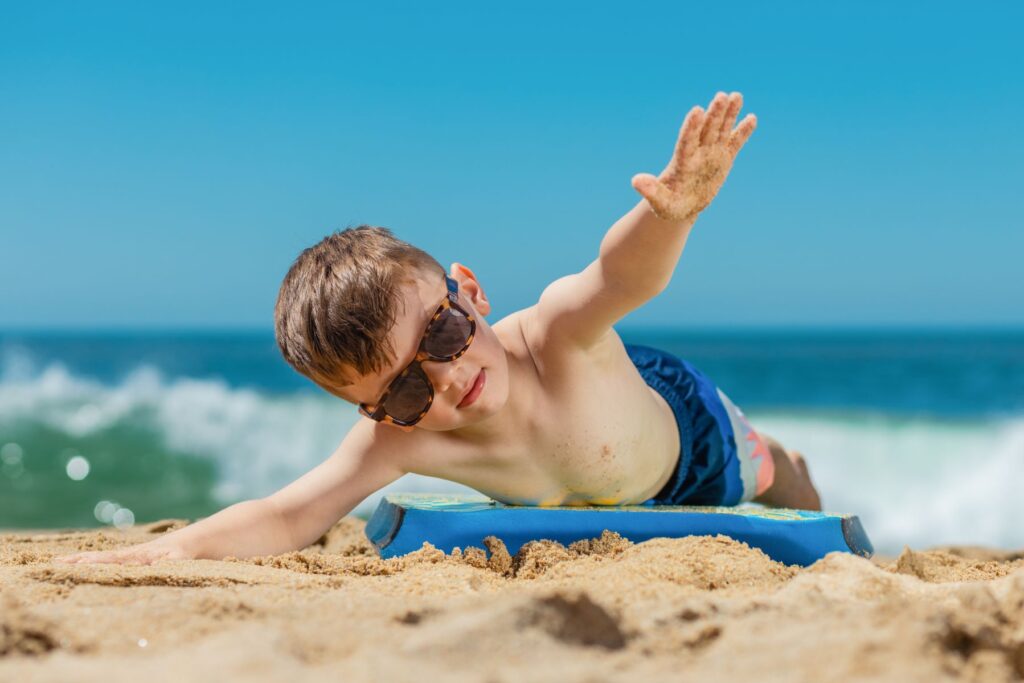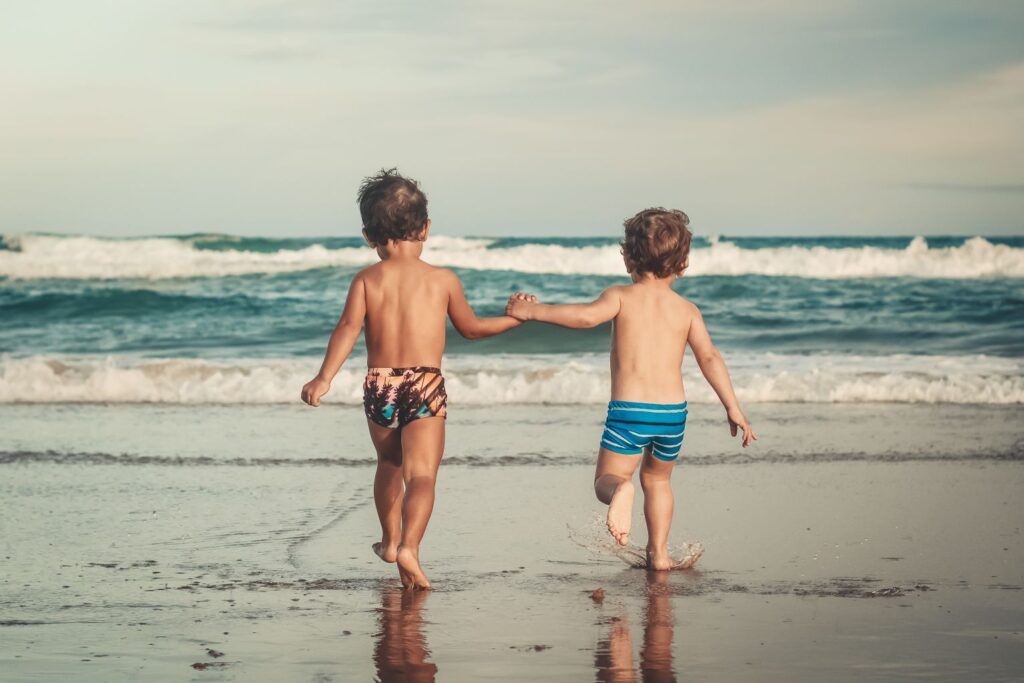A day at the beach is fun for the whole family. You’ll head back home exhausted, happy, and covered in sand. But without proper precautions, a visit to the ocean can quickly change from being a treat for you and your kids to being a close call…or worse.
Teaching kids about ocean safety isn’t the easiest task. Most kids are focused on building sandcastles and enjoying the waves. But as a parent, it’s important to be proactive and help your little ones understand how to have fun at the beach while staying safe.
Here are some tips for teaching your kids about ocean safety and minimizing risks while you’re at the beach or out on the water.
Table of Contents
Know All the Risks Yourself
You might know that kids can get stuck in the undertow of the ocean and swept away, but you might not realize that heatstroke is another danger that can affect kids at the beach. Ocean water might feel cold, but the movement of the waves causes you to move and sweat more, causing you to lose fluids throughout the day. Staying hydrated and preventing heatstroke are just a few of the important ocean safety tips to share with your kids.
There are other dangers too. Changes in the weather, venomous marine life, sharks, and boats can all pose risks to swimmers. Knowing the risks doesn’t mean that you should be paranoid about every little thing, but it will help you keep your kids safe and teach them about the biggest risks of the beach.
Keep Your Discussions Age-Appropriate
When kids are very little, they don’t need to know everything about ocean safety just yet, because they aren’t independent enough to be in too much danger. With very young children, it’s important to keep a very close eye on them and talk about why you’re taking certain precautions, like putting on more sunscreen and taking breaks in the shade.
When kids get a little older, they need to be more aware of water safety so they can enjoy a bit more independence without taking unnecessary risks. Having them wear a life jacket and ask before going into the water are easy ways to reduce the risk of drowning or other life-threatening situations. Discuss risks before you get to the beach so that no one is distracted while you’re talking about these important topics.
Make Learning About Safety Fun!

We’re all more likely to remember what we learn if we have fun in the process, especially kids. There are some great resources out there, including a series of videos from the Red Cross about water safety that you can use to help your kids learn in an age-appropriate way. You might also try making quizzes with rewards to test their knowledge!
Have Them Wear the Right Gear
Some risks, like stepping on sharp objects, getting a bad sunburn, or accidentally swimming into deeper water, can be minimized just by wearing the right gear or using the right products. Make sure your kids have flotation devices and water shoes that fit them well. Teach them to reapply sunscreen often and seek out shade when needed.
Pay Attention to Beach Conditions and Talk About Them
The dangers of the ocean change with the weather and marine life conditions. Pay attention to factors like incoming storms, which can make swimming extremely dangerous. You should also stay up-to-date on shark sightings if you’re heading to beaches where they’re known to swim nearby. Understanding specific safety risks in your community can mean the difference between a pleasant day at the beach and tragedy.
Talk to your kids about how these conditions affect safety. A hot day at the beach has different risks from a stormy day. Walk your kids through different safety considerations based on the conditions at the beach and discuss why you need to take different precautions.
Strike a Balance

The most difficult part of teaching kids to be safe at the beach is striking the right balance. You want them to have a good time, but it’s very easy for kids to forget how dangerous playing in the ocean can be. You need to ensure that they understand what the risks are and what they need to do to stay safe without terrifying them with tales of shark attacks that could ruin their time at the beach.
Model Smart Behavior
It can be a challenge to get kids to listen, especially when the information is about safety. Most kids don’t think these kinds of discussions are very interesting! That’s why it’s so important to reinforce your words with action.
Model the behavior you’d like to see from your kids. Keep on top of your sunscreen application, drink lots of water, and avoid going out into deep water. Follow all of the beach rules and the lifeguard’s instructions, if there is one.
Ocean safety isn’t the most fun topic, but it’s incredibly important. Teaching your kids these concepts as early as possible could save their lives one day.













